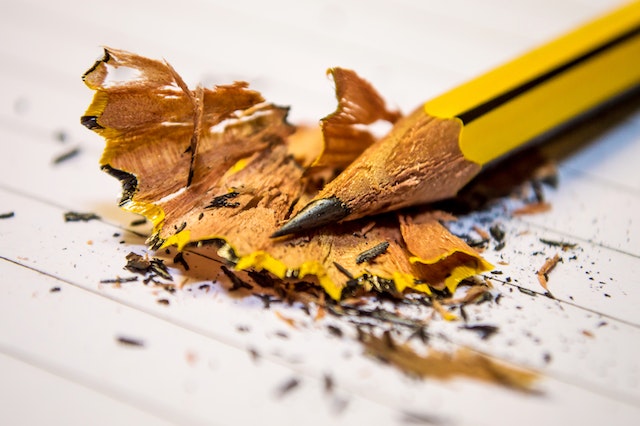
When were pencils invented? The first pencil was invented in 1565.
It is easy to think that something as simple as the pencil has been around for eons, but that is not actually true. Graphite was discovered in 1565, and the very first pencil was made very shortly after. Before pencils were invented, people used many different things to write. Before paper, people carved into clay, or chiseled into stone, or wrote on wax tablets. The Chinese used brushes to write on scrolls made of sticks of bamboo. When the ancient Egyptians invented papyrus, they came up with a pen system to write on it. They made pens out of reeds and wrote by dipping them in different colored inks. In the Middle Ages, the few people that could write usually used a bone stylus with a metal tip and they would write by dipping it in ink. The quill pen came along shortly after that. They were stronger than the reed pens and lasted longer.
If people didn’t want to write with ink, their choices were limited. Some people drew with charcoal. Some of the great artists used charcoal to sketch with. Chalk was another option, and there were different colored chalks available. There was also a technique called silverpoint. A surface was covered in a primer and the artist would draw using a silver rod or wire as a stylus.
In 1565, graphite was discovered in Grey Knotts, a small village in England. The local people used pieces of graphite to mark their sheep. Graphite had been known about for thousands of years, but this particular seam of graphite was very pure and solid. It was very easy to saw it into sticks. People originally thought it was lead, and they named it plumbago, which means lead ore. This is the reason why we call the graphite in a pencil “lead”.
Graphite became very popular very quickly, but not because it could be used to write with. The government realized that graphite powder could be used to line the inside of cannonball molds, improving their quality. Because of this, the government took control of the graphite mine and guarded it. The only way people could get any of the graphite was to steal it.
When people realized the usefulness of the graphite sticks, they began to use them to write. The graphite stuck to the hands very easily, so these early pencils were wrapped in sheep skin, string, or even bread. Shortly after the graphite had been discovered, an Italian couple called Sinonio and Lyndiana Bernacotti started making wooden casings for the graphite. They hollowed out a stick of juniper wood and inserted the graphite. Shortly after that, someone else realized you could calve a groove in two pieces of wood, insert the graphite, and then glue them together.
Britain had the only graphite mine that could produce pencil quality graphite, so they had a monopoly. When the Napoleonic wars started in the late 18th century, Britain cut off France’s graphite supply. Nicola-Jacques Conte was an officer in Napoleon’s army, and he realized that you could mix powdered graphite with clay and make rods. When these were fired in a kiln, they performed exactly the same as a pencil. He also realized that by increasing or decreasing the ratio of clay to graphite powder, he could make darker or lighter pencils. More graphite powder gave a darker pencil and more clay gave a lighter one.
It turned out that Joseph Hardtmuth, an architect in Austria, had already worked out how to do this in 1792 and had been making pencils this way. His new clay and graphite mix was much more affordable than a pure graphite pencil and he formed the Koh-I-Noor Company in Vienna. It is claimed by his company that he was the person who came up with the HB system and that the H stands for his name, Hardtmuth, and the B for the town he was in, Budweis. I cannot find enough to say if this is true or not. Many people believe that the H stands for Hard and the B for Black.
Pencils were imported into America and the first automatic pencil machine was made there by Ebenezer Wood. He didn’t patent his machine and Eberhard Faber opened a very successful pencil factory in New York. Joseph Dixon worked out a way to mass-produce pencils in 1870, and the price dropped. Pencils were everywhere, which is probably why it seems as though they have been around forever. So, when were pencils invented? A lot more recently than we think. Pencils have been around for less than 500 years. And this is what I learned today.
https://blogs.bl.uk/untoldlives/2019/05/the-history-of-the-pencil.html
https://pencils.com/pages/the-history-of-the-pencil
https://en.wikipedia.org/wiki/Pencil
https://en.wikipedia.org/wiki/Graphite
https://www.bl.uk/history-of-writing/articles/a-brief-history-of-writing-materials-and-technologies
